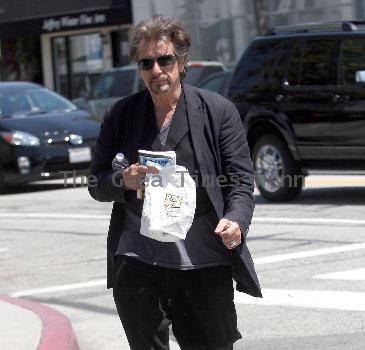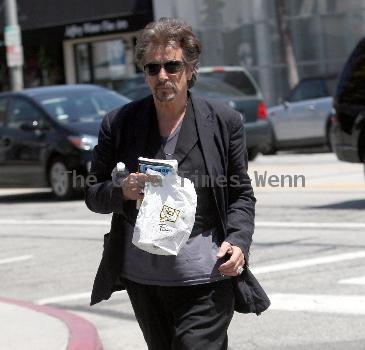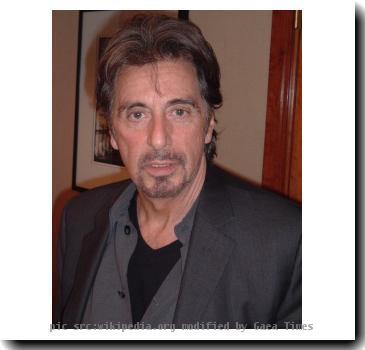Paris in the dark: Exploring theaters and films in a paradise for movie-lovers
By Jake Coyle, APTuesday, August 17, 2010
Exploring one of Paris’ great attractions: Cinemas
PARIS — It may seem backward to travel to one of the most beautiful cities in the world and sit in the dark.
In Paris, there are seemingly endless rues and quais and museums and cafes to explore, which means visitors often hurry past one of the city’s greatest attractions: its cinemas.
They’re found throughout the French capital — and in particular the Latin Quarter. No city in the world boasts such a bevy of independent theaters, where vibrant repertory series and exciting selections play nightly.
New York might quibble, but most of its independent theaters long ago shuttered. Manhattanites can proudly claim the essential Film Forum, but Parisians can stand on the Left Bank and have nearly a dozen similar options within a five-minute walk.
Spending an entire trip among flickering projections would, of course, be extreme. But it does occasionally rain in Paris and sometimes a cool night at the movies is just the ticket after a day of traipsing around the attractions. And, unlike many destinations in Paris, no one — or perhaps everyone — is a tourist at the movies.
Your first move is to pick up your moviegoing Bible: the weekly Pariscope, which can be had for less than a euro at any newsstand. In it, you’ll find a detailed listing of every showing that week. It’s in French, but addresses, movie titles and show times are easily understood.
A key point: V.O. signifies version original (with French subtitles), whereas V.F. means version francais (dubbed in French). Now, if your French is poor, you are limited to movies in English, but this is only a slight impediment. Great, old American movies are plentiful and the odds are good that at any moment, a flick with Humphrey Bogart or Woody Allen is showing somewhere is Paris. As with jazz, the French are ardent celebrators of American filmmaking.
This is, after all, a birthplace of cinema. Here, it is the seventh art. So some history is in order, which means a trip to the Cinematheque Francaise.
Any film buff is well aware of the Cinematheque’s significance: Formed from Henri Langlois collection in the ’30s, its archives and constant screenings have long served as a kind of home base for Paris’ film scene. Many of the famed directors of the New Wave, like Francois Truffaut and Jean-Luc Godard, gathered here, though you can’t imbibe this history from its original location. It moved in 2005 to a beautiful, curvaceous building designed by architect Frank Gehry on Parc de Bercy in the 12th arrondissement.
Aside from several fine, modern theaters at the Cinematheque, you can also find the Musee du Cinema, which includes some truly magical artifacts from the history of cinema: Louis Lumiere’s 35mm projector, Thomas Edison’s kinetoscope, Robert Wiene’s expressionist sketches for “The Cabinet of Dr. Caligari,” a copy of the robot Maria from “Metropolis” made for the museum, and much more.
There are also rotating exhibits at the museum, and the collections — film excerpts, stills and props — will surely whet your movie appetite.
Turning to your Pariscope newspaper, the advice is simple: Follow the movies. See what’s playing and go after what intrigues you.
I, for one, generally seek out the great films of the ’40s and ’50s, some of which found artistic renown through the French. The famed French film magazine Cahiers du Cinema, co-founded by Andre Bazin, was essential to trumpeting the artistry of American genre filmmakers like Howard Hawks and Nicholas Ray.
This is one reason Paris may be the best place to see a film noir, in all its black-and-white, moody, fatalistic grandeur. The films might feature fast-talking detectives in Los Angeles, but a film noir feels most at home in Paris.
The selection on any given week in Paris is usually exceptional. A recent week, for example, boasted an Alfred Hitchcock series, a new print of the Clark Gable-Marilyn Monroe film “The Misfits” (1961), an Al Pacino series, Charles Laughton’s “The Night of the Hunter” (1955), the fabulous but lesser known noir “Fallen Angel” (1945), Bogart’s “The Enforcer” (1951), Robert Mitchum in 1947’s “Crossfire,” Sydney Lumet’s “The Offense” (1972), the new, touring print of Michael Powell’s “The Red Shoes” (1948) and much more.
You’ll quickly notice some differences to the Parisian moviegoing style. Show times are often listed for when the ads and trailers start and for when the film actually begins. Popcorn is not something generally eaten at the art house cinemas: Moviegoing is serious business.
Certain theaters are worth seeking out. Le Champo, on the rue des Ecoles, is perhaps the quintessential Parisian art house cinema. First opened in 1938, its survival has at times depended on the support of protesters refusing to allow closure.
If you don’t like the selections there, you can always try one of the other fine theaters around the block on rue Champollion. Many of Paris’ independent theaters are only a stone’s throw from here, including the nicely programmed Action Ecoles. After a movie at the Champo, walk up the hill for a drink outside at one of the cafes on the pleasant, restful Place de la Sorbonne.
One of the oldest cinemas in Paris is the Studio des Ursulines, near the Jardin du Luxembourg on the rue des Ursulines. It was built on the site of a Ursuline convent from the 1600s, and made into a silent film art house in 1926. It now shows first-run movies, but its plush red interior is hard to beat.
On the Right Bank, Cinema Mac-Mahon will always be dear to me, since it was where I first saw “Taxi Driver” on the big screen. It sits in the shadow of the Arc de Triomphe, just off the Place Charles de Gaulle.
Studio 28, opened in 1938, is a lovely Montmartre theater and a good destination for “Amelie” fans. This is the place the beloved film’s heroine frequented, (and she did chomp on popcorn). If you can, time your visit to coincide with sunset, and from the top of Montmartre watch the lights turn on across Paris as the city dims.
There are other unique theaters, too, like the Pagoda on the rue de Babylone in the 7th arrondissement. True to its name, it’s styled after a Japanese temple. If you want a more modern view of Parisian moviegoing, try one of the MK2 theaters. The MK2 Bibliotheque at the Francois Mitterand National Library on the Quai de Seine, has 14 theaters and a futuristic vibe.
The Grand Rex is a movie palace built in 1932 and its main auditorium can seat nearly 3,000. The biggest theater in Paris, it’s a common spot for flashy premieres, so the selection is typically first-run films. Its exquisite Art Deco design gives it a fantastical aura, like a grand, fairy-tale cinema.
All of these theaters beam out wondrous films every night. As you exit to the street rubbing your eyes, you might think that the best part of all about moviegoing in Paris is that the city awaiting you outside is hardly less of a dream than the movies.
If You Go…
CINEMATHEQUE FRANCAIS: Parc de Bercy. 51 rue de Bercy, 12th arrondissement: www.cinematheque.fr/
LE CHAMPO: 51 rue des Ecoles, 5th arrondissement: www.lechampo.com/
STUDIO 28: 10 rue Tholoze, 18th arrondissement: www.cinemastudio28.com/
CINEMA MAC-MAHON: 5 avenue Mac-Mahon, 17th arrondissement: www.cinemamacmahon.com/
LE GRAND REX: 1 Boulevard Poissonniere. 2nd arrondissement: www.legrandrex.com/
Tags: Al Pacino, Architecture, Arts And Entertainment, Europe, France, Leisure Travel, Movies, Museums, Paris, Recreation And Leisure, Visual Arts, Western Europe


